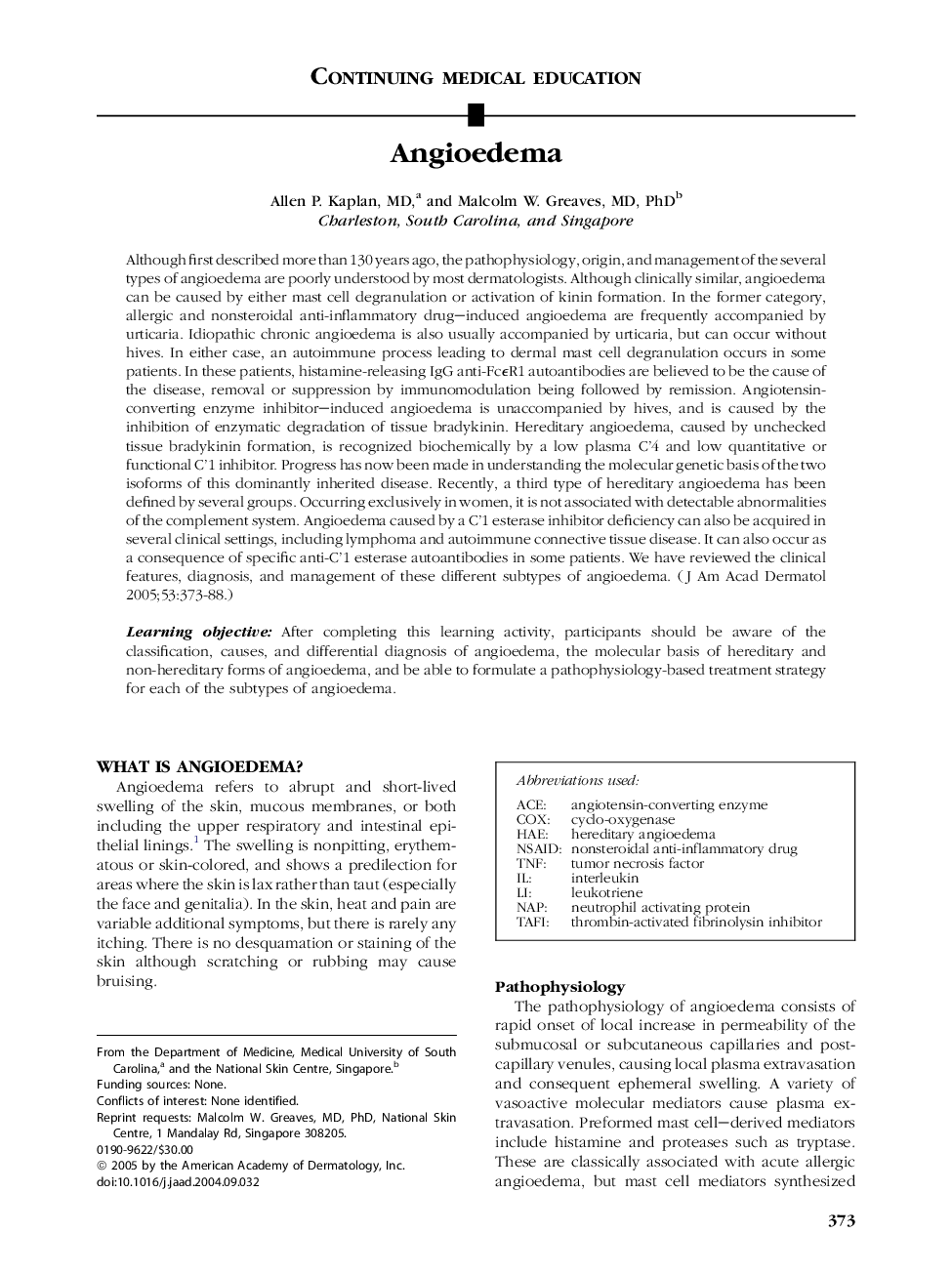| Article ID | Journal | Published Year | Pages | File Type |
|---|---|---|---|---|
| 10010721 | Journal of the American Academy of Dermatology | 2005 | 16 Pages |
Abstract
After completing this learning activity, participants should be aware of the classification, causes, and differential diagnosis of angioedema, the molecular basis of hereditary and non-hereditary forms of angioedema, and be able to formulate a pathophysiology-based treatment strategy for each of the subtypes of angioedema.
Keywords
Related Topics
Health Sciences
Medicine and Dentistry
Dermatology
Authors
Allen P. MD, Malcolm W. MD, PhD,
